ONE dazzling, another deliberately drab – populations of two very different species of butterfly have soared on National Trust heathland in Studland.
The increase in silver-studded blue and grayling butterflies has far exceeded the countrywide trend.
The silver-studded blue is known for the vivid, shimmering blue colour of the males, whereas the grayling is a master of disguise, its brown and grey colouring perfectly blending in with bare earth, stones, and dry vegetation.
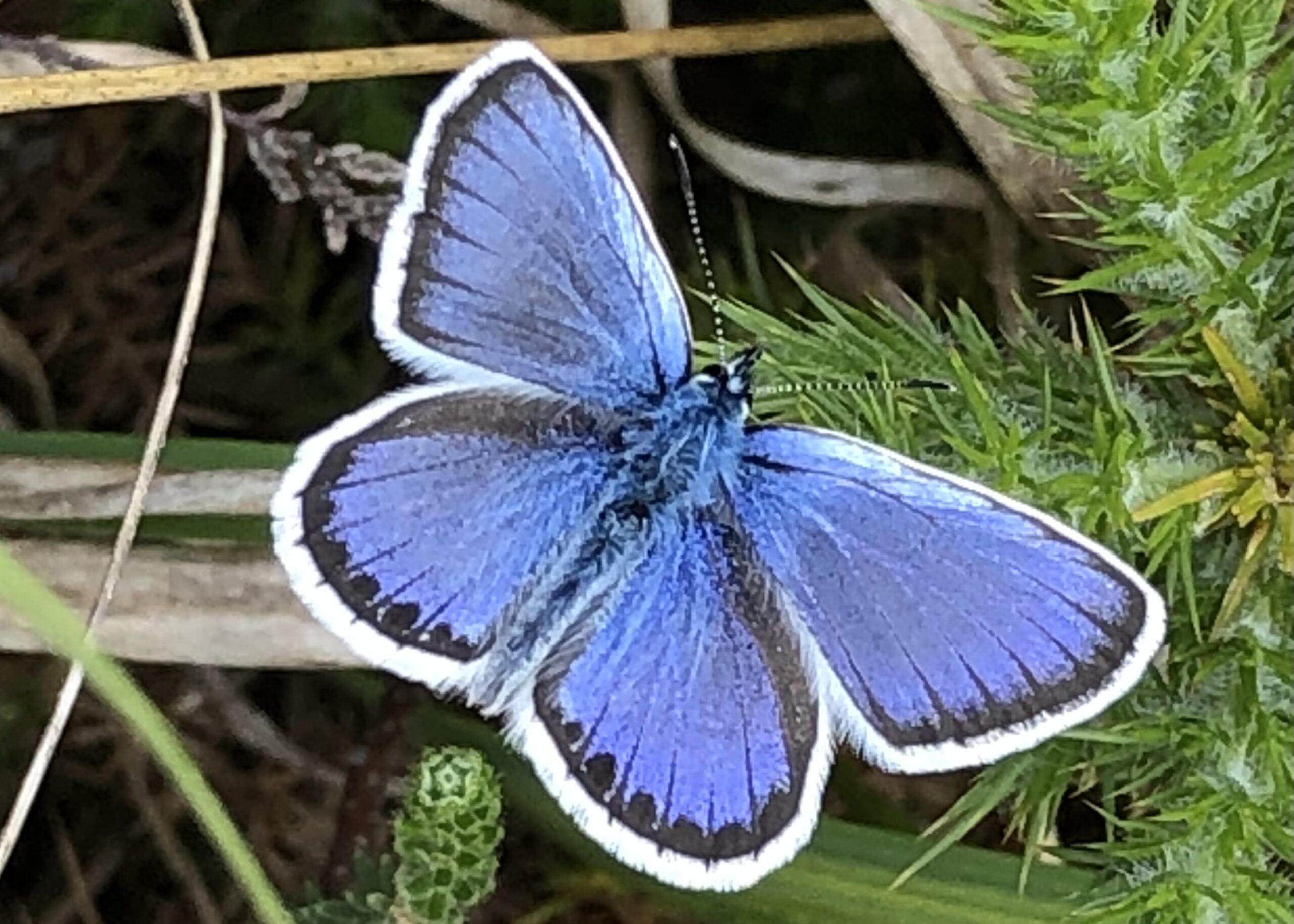
Silver Studded Blue butterfly, male. Picture: Mike Wenham
Volunteers have monitored butterflies from April to September at Studland annually for almost 50 years.
Figures for one of the transects showed that silver-studded blues increased by almost 1,700% in 2023 compared to 1976 (21 butterflies were counted in 1976 and 376 in 2023).
Nationally, the rise has been just 67%. Graylings increased by 168% but declined nationally by 70%.

Grayling butterfly. Picture: National Trust, Mark Singleton
Butterfly numbers fluctuate each year, so ecologists also looked at the average numbers of both species in the four years after the survey began and the four most recent years.
For 1976 to 1979, the numbers were silver-studded blues (24) and graylings (67). For 2020 to 2023, it was silver-studded blues (368) and graylings (198).
Dr Martin Warren, one of the UK’s leading butterfly experts, has been counting butterflies there as a volunteer for the past four years.
He said: “These figures really are something to celebrate, at a time when many butterflies aren’t faring well at all. It’s especially good to see that the graylings are increasing, when they are in serious decline elsewhere in the country. We are hoping the 2024 count will tell an equally positive story.”
Once the butterflies are on the wing, (July to September), Martin and a team of volunteers monitor the same transect every week.
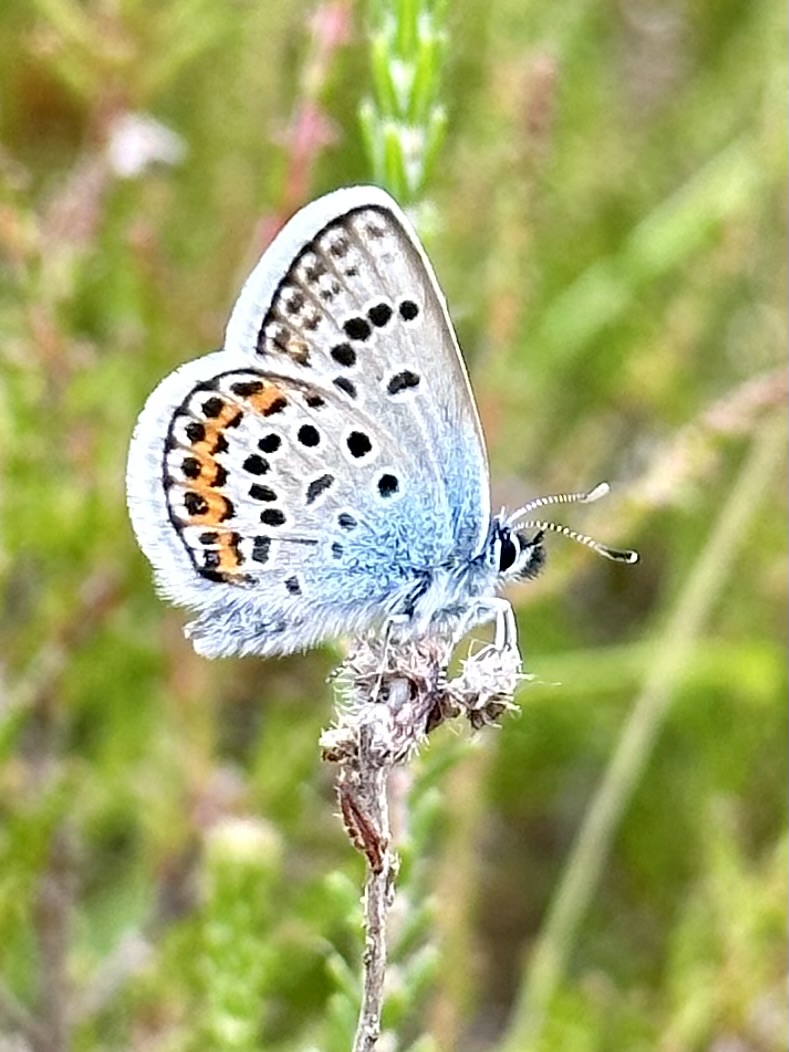
Silver-studded Blue butterfly, male. Picture: National Trust, Mark Singleton
The monitoring sites are on heathland either side of Ferry Road in Studland, part of the Purbeck Heaths National Nature Reserve (NNR).
David Brown, National Trust ecologist, said: “This is fantastic news, one of the many success stories for wildlife across the Purbeck Heaths NNR.
“We aren’t exactly sure why these two species are doing so well, but both need areas of bare ground where they can bask.
“That’s often provided by the hoof prints of grazing animals, or by pigs rooting out vegetation.
“At Studland, the butterflies are thriving beside a track used by walkers and cyclists – and it’s the track that provides them with the bare ground habitat.
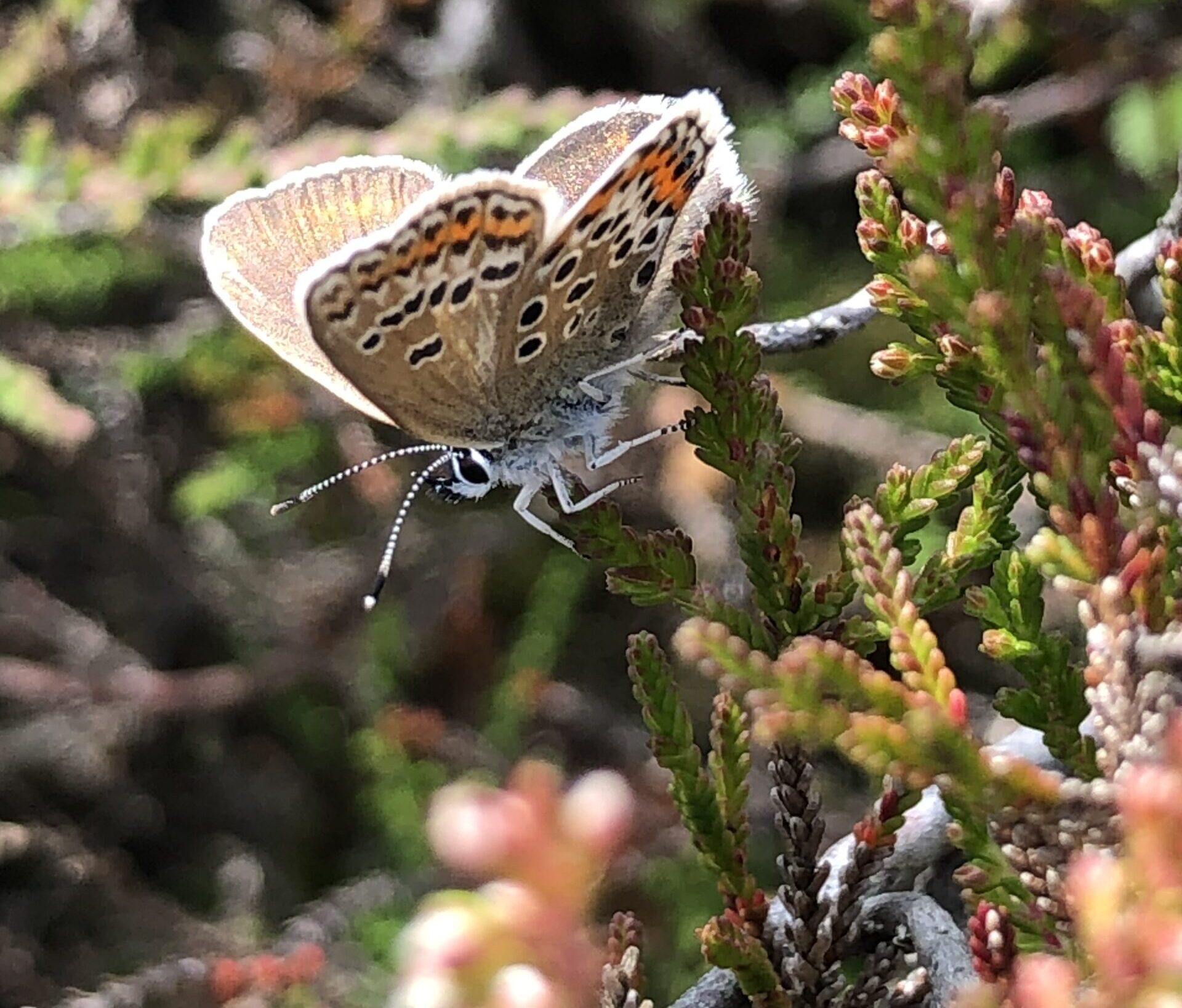
Silver Studded Blue butterfly, female. Picture: Mike Wenham
“We are incredibly grateful to the volunteers who diligently carry out this important work across the NNR – without their consistent records, we wouldn’t have a clear picture of the state of nature in Purbeck.”
Female silver-studded blues are less showy than the males, being brown with metallic blue spots. Their caterpillars have a fascinating relationship with ants.
The ants protect the caterpillars from predators and parasites, and in return they get to feed on a sugary substance that the caterpillars produce.
The grayling is mainly dark brown above, with washed-out orange markings. The underside of the forewing is orange with two large eyespots. Many butterflies have eyespots, thought to either intimidate predators or distract them away from the main body parts.
The public are invited to count butterflies as part of the Big Butterfly Count, a citizen science scheme organised by Butterfly Conservation, starting on Friday July 12 until Sunday August 4.


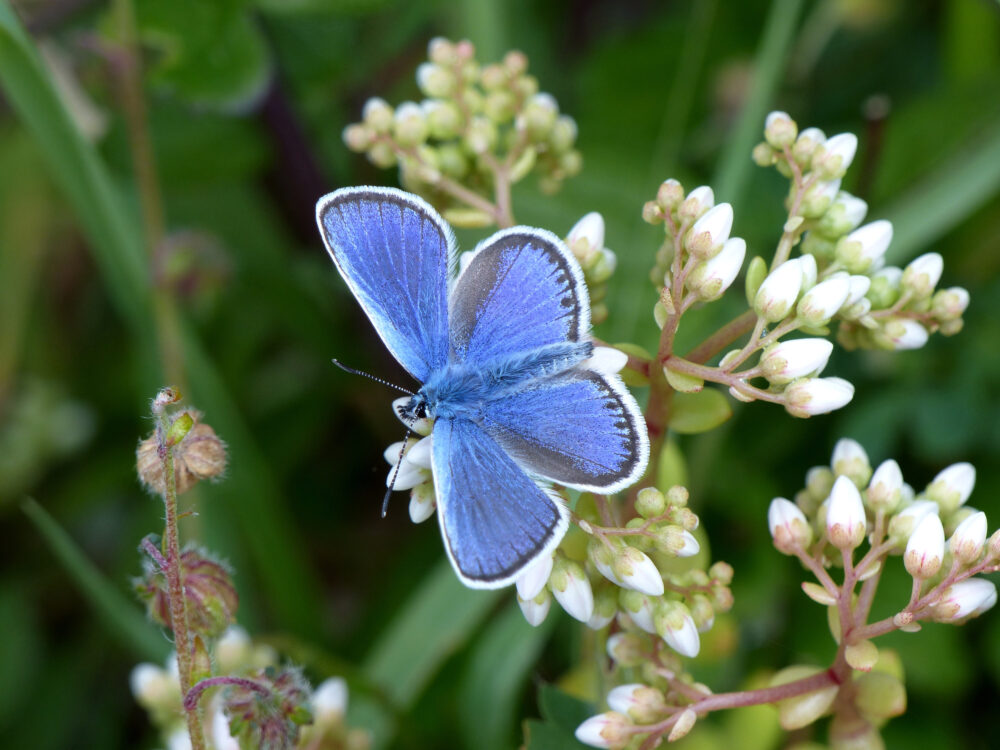




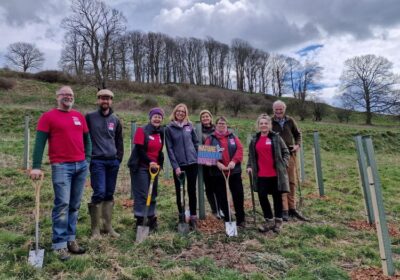



Leave a Reply